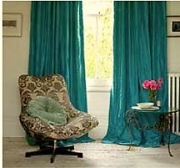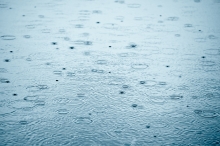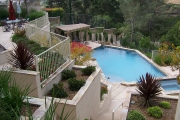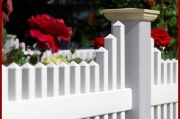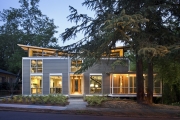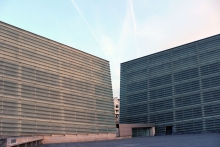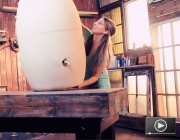- Error
{Re}habitat
Learn how adaptive reuse and upcycling can add hip design to your home, apartment, or yard with the Go Green channel's {Re}habitat series. Follow host Rachael Ranney as she shows you how to repurpose salvaged and found materials, adding fun and function to your space without breaking your budget.

This guest post for Buildipedia was written by Sarah Oxley on behalf of Custom Curtains,†providers of made to measure curtains. Sarah is an interior design enthusiast, and here she shows us how to accurately measure windows for curtains.
The right window treatment can tie the design of a room together, while a badly chosen one can take the whole room down with it.
Why Change Standard Language Regarding Weather Delays in Construction?
Written by David A. Todd Fri Jun 22 2012Welcome to the On Site channelís Construction Administration Column. Join us as we continue a conversation regarding contracts and weather delays.
In David Toddís last Construction Administration Column, he recommended an alternative to standard language regarding weather delays. Davidís suggestion spurred some discussion of the topic, so here are his further thoughts.
Environmentally Conscious Landscaping Tips for Challenging Climates and Terrain
Written by Lisa Taylor Minor Thu Jun 21 2012Uneven terrain and climate extremes are two of the biggest challenges homeowners face when attempting to create beautiful, low-maintenance, environmentally conscious residential landscapes. Having a realistic expectation of cost and time requirements, as well as a thorough knowledge of native plants, soil composition, rainfall expectancy, irrigation systems, and local permitting regulations can dramatically impact the long-term success of an outdoor project.
With a long list of benefits, compressed earth blocks make an ideal natural building material.
Approximately one-quarter of the worldís population live in homes made of earth, mostly in the developing world. It makes sense, after all. The dirtís either cheap or free and the homes have plenty of benefits, including:
Pool fences come in a variety of material types, styles, and colors to suit the taste of virtually every pool owner, and installation can be accomplished with a few basic skills. Installing the fence is usually the last step of the in-ground pool installation process, but without a doubt it is one of the most important as far as safety goes. The average pool enclosure is about 150 to 180 linear feet, and the cost of an installed pool fence ranges from $35 to $45 per foot, making a do-it-yourself installation very attractive. Today, the most popular DIY pool fence material choice is ornamental aluminum, and it's no coincidence that it is also the fastest growing segment of the retail fence market. Aluminum pool fence sections come either disassembled or fully assembled and ready to install. Aside from the frustration of putting together 20 or more sections, there's the very real potential of scratching the powder coat finish, so most DIY installers elect to have the pool fence sections delivered fully assembled.
House of the Month: Rain or Shine, This House Is Always Green
Written by Murrye Bernard Tue Jun 19 2012RainShine is the first modernist LEED Platinum house in the Southeast, according to architect Robert M. Cain.
Retired couple Chuck and Mary Bosserman purchased a lot near downtown Decatur, a suburb of Atlanta, Georgia, with the goal of building an energy-efficient home filled with natural light, cooled by cross-breezes, and supportive of their active lifestyle. However, they accomplished much more than that. Their vision, executed with the expertise of architect Robert M. Cain, AIA, LEED AP, resulted in a home that exceeds LEED Platinum standards Ė the greenest level of certification in the organizationís pilot program for homes. Dubbed ďRainShine,Ē the home uses nearly half the energy of its traditional counterparts, and its modern aesthetic has attracted the attention of the community, creating opportunities for education.
Where an architect created harmony and balance, locals see discord and ostentation.
San Sebastian, in Spainís Basque country, is one of those incredibly majestic places you can visit once and never forget. Unlike many of Spainís Mediterranean towns that have been massively overdeveloped over the years, San Sebastian still offers breathtaking beaches and wide boulevards, perfect for that famed Spanish strolling. The city of San Sebastian has class, style, and, of course, spectacular views of the Bay of Biscay. Itís easy to see, then, why local residents are quite protective of any development proposals in their idyllic hometown.
Create an eco-friendly and attractive DIY Rain Barrel for your garden.
Rachael Ranney, the host of {Re}habitat, shows you how to construct and install a DIY rain barrel. By using a recycled plastic drum to collect, store, and dispense rainwater, you can keep your garden growing strong, even through the drier months of the year.
